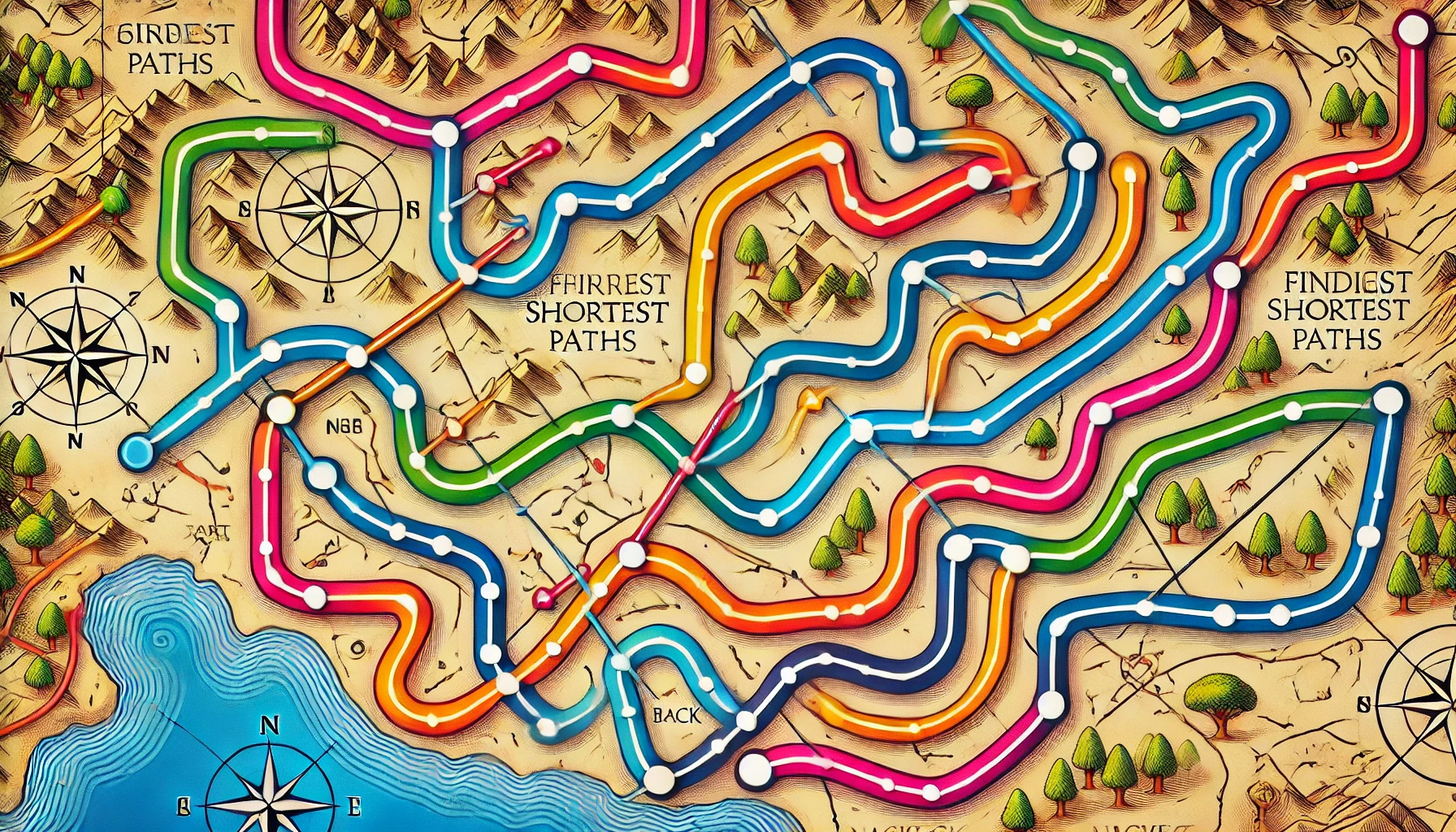Word Ladder II - BFS
 Abhi
Abhi
A transformation sequence from word beginWord to word endWord using a dictionary wordList is a sequence of words beginWord -> s<sub>1</sub> -> s<sub>2</sub> -> ... -> s<sub>k</sub> such that:
Every adjacent pair of words differs by a single letter.
Every
s<sub>i</sub>for1 <= i <= kis inwordList. Note thatbeginWorddoes not need to be inwordList.s<sub>k</sub> == endWord
Given two words, beginWord and endWord, and a dictionary wordList, return all the shortest transformation sequences from beginWord to endWord, or an empty list if no such sequence exists. Each sequence should be returned as a list of the words [beginWord, s<sub>1</sub>, s<sub>2</sub>, ..., s<sub>k</sub>].
Example 1:
Input: beginWord = "hit", endWord = "cog", wordList = ["hot","dot","dog","lot","log","cog"]
Output: [["hit","hot","dot","dog","cog"],["hit","hot","lot","log","cog"]]
Explanation: There are 2 shortest transformation sequences:
"hit" -> "hot" -> "dot" -> "dog" -> "cog"
"hit" -> "hot" -> "lot" -> "log" -> "cog"
Example 2:
Input: beginWord = "hit", endWord = "cog", wordList = ["hot","dot","dog","lot","log"]
Output: []
Explanation: The endWord "cog" is not in wordList, therefore there is no valid transformation sequence.
1) Explain the problem
The problem is to find all shortest transformation sequences from a start word (beginWord) to an end word (endWord) using a given dictionary of words (wordList). Each step in the transformation must change exactly one letter, and each intermediate word must be in the wordList. The task is to return all shortest transformation sequences as lists of words, or an empty list if no such sequence exists.
2) Short easy to remember solution/approach
Use Breadth-First Search (BFS) to find the shortest path levels from
beginWordtoendWord.Use Depth-First Search (DFS) to backtrack from
endWordtobeginWord, collecting all valid transformation paths.
3) Solution in JavaScript with code commenting
function findLadders(beginWord, endWord, wordList) {
const wordSet = new Set(wordList);
if (!wordSet.has(endWord)) return [];
const neighbors = {}; // To store the graph
const distance = {}; // To store distance from beginWord to each word
const bfs = () => {
const queue = [beginWord];
distance[beginWord] = 0;
while (queue.length > 0) {
const currentWord = queue.shift();
const currentDistance = distance[currentWord];
for (let i = 0; i < currentWord.length; i++) {
for (let c = 97; c <= 122; c++) { // ASCII codes for 'a' to 'z'
const newWord = currentWord.slice(0, i) + String.fromCharCode(c) + currentWord.slice(i + 1);
if (wordSet.has(newWord)) {
if (!(newWord in neighbors)) neighbors[newWord] = [];
neighbors[newWord].push(currentWord);
if (!(newWord in distance)) {
distance[newWord] = currentDistance + 1;
queue.push(newWord);
}
}
}
}
}
};
const dfs = (word, path) => {
if (word === beginWord) {
result.push([beginWord, ...path.reverse()]);
return;
}
for (const neighbor of (neighbors[word] || [])) {
if (distance[neighbor] + 1 === distance[word]) {
dfs(neighbor, [...path, word]);
}
}
};
const result = [];
bfs();
if (!(endWord in distance)) return [];
dfs(endWord, []);
return result;
}
4) Explanation of the solution in an easy-to-understand way with a real-life example
Imagine you are at a start point and need to reach an end point by changing one step at a time, with each step forming a new valid point from a given list. You first find the shortest paths to reach the end point, then backtrack from the end point to the start, collecting all paths that led to the shortest journey. Think of it like finding all possible shortest routes on a map from one city to another.
5) Code explanation in pointers
Initialize Set: Convert
wordListto a set for O(1) lookup.Graph and Distance Storage:
Neighbors: Store the graph of transformations.
Distance: Store the distance from
beginWordto each word.
BFS Function:
Queue Initialization: Start BFS with
beginWord.Graph Building: For each word, generate all possible one-letter transformations and update neighbors and distances.
DFS Function:
- Backtrack Paths: From
endWord, backtrack tobeginWordusing valid transformations that respect the distance property.
- Backtrack Paths: From
Result Compilation: Collect all valid paths in
result.Return: Return all collected paths.
6) Complexities
Time Complexity: O(m n 26 + m * n) where m is the length of each word and n is the number of words in
wordList. The BFS explores all transformations and the DFS collects paths.Space Complexity: O(m * n) for the graph, distance storage, and paths collection.
Subscribe to my newsletter
Read articles from Abhi directly inside your inbox. Subscribe to the newsletter, and don't miss out.
Written by
